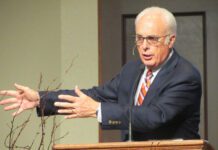Alignment. We use this term a lot at Aspen Group. We even hold an annual event called the Alignment Conference that talks about how aligning your ministries, leadership and facilities while considering the influences in today’s culture can ultimately create a better space for your kingdom work.
But it’s more than just talk. It’s a passion of ours, because we’ve seen it play out again and again with churches when building facilities for ministry.
Every church is unique, as it should be. God has called each church to serve a different community, offer different ministries, and integrate different leadership personalities. But what remains the same is the church’s need for alignment. For any strategy to be successful, we believe the church needs to find that alignment of culture, ministries, leadership and facilities.
Recently, I talked with Jerry Day, lead pastor at The Ridge in Columbus, Ind., to hear how intentional efforts to create alignment have yielded growth:
What issues were you facing that led you toward a building project?
Ten-plus years ago, we identified what we called “barriers to growth.” We wanted to grow by reaching people who weren’t going to church. As a result, we changed almost everything about our church. We changed our vision, our philosophy of ministry, how we did ministry, some of our staff, and even our name.
One remaining barrier was our facility. It was not in a location conducive to growth. In addition, our facility was a traditional church building. When we made many other changes, the building was not a match for who we had become. However, even before we decided to move forward with building a new facility, we began to grow significantly because of the many changes. We had more than doubled in size, so we also were simply running out of space. And we had no room for expansion on our current property.
How has your building affected your growth and your ability to articulate your mission?
The significance of our building cannot be overstated with regard to our ability to articulate our mission. We now have a building that fits who we are as church. We have alignment between our vision, our philosophy of ministry, our “brand” and our facility. The spaces allow us to do ministry that reflects the internal changes we had been making for years. Our vision is to do whatever it takes to reach our community for Christ. For people who have not been going to church, they find our facility warm, nontraditional, exciting, and we no longer hear, “I had no idea you were this kind of church!”
People expect us to be different by design than a traditional church. After our new facility was built, it created a “buzz” around the community that led to many people checking us out. Many of those who “stuck” were people who had not previously been going to church. We were a church of about 1,000 before we moved. Now we are a church of over 1,500. On Easter this past year, we had 2,500.
Since we’ve moved into the new building 1.5 years ago, we have baptized over 100 people. So it’s not just about numbers, it’s about how lives have been impacted. The bottom line is that our new building has translated to lives being changed for eternity.
What lessons have you learned along the way?
Alignment between your vision and your facility is so significant. We did grow so fast that our infrastructure was challenged (assimilation, people connections, community, pastoral care, spiritual formation). We could have done a better job of planning for the growth. In selecting a builder, we learned that it is essential to have a designer/builder that understands their role of providing us with a facility that aligns with our vision.













